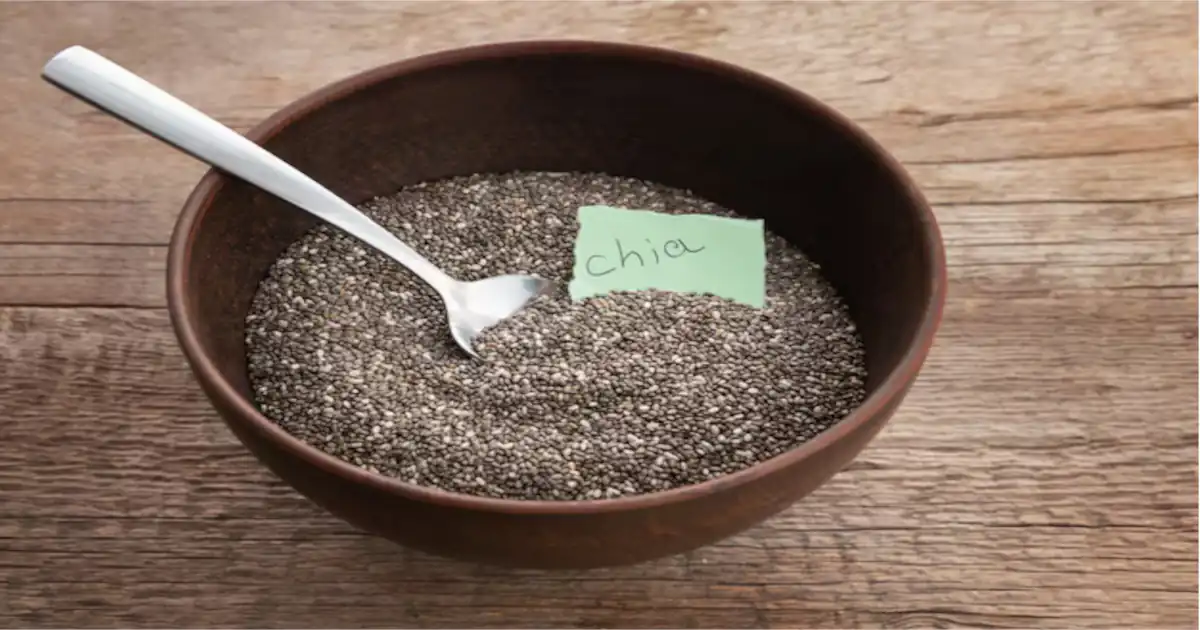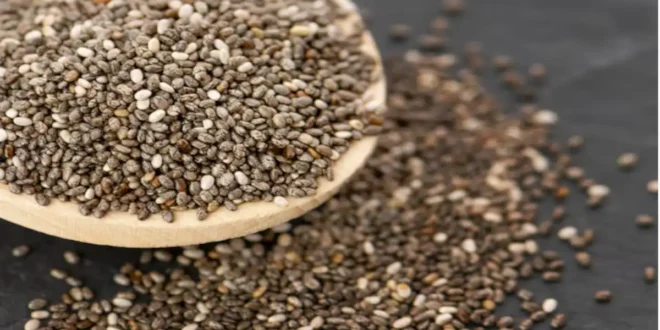What Happens When You Mix Chia Seeds: Benefits and Uses
Chia seeds, a small yet nutrient-dense food, have gained widespread popularity in recent years for their health benefits and versatility in recipes. These seeds are packed with essential nutrients, including omega-3 fatty acids, fiber, protein, and various vitamins and minerals, making them a superfood in many people’s diets. One of the most common uses of chia seeds is mixing them with various liquids or foods to create nutritious meals or beverages.
But what happens when you mix chia? Why do chia seeds swell up in liquid? What nutritional benefits can you gain from incorporating them into your diet, and how can chia seeds impact your health and well-being? This article explores the science behind chia seeds, their benefits when mixed with different ingredients, and the health outcomes you can expect from adding them to your diet.
What Are Chia Seeds?
Chia seeds come from the Salvia hispanica plant, a flowering species native to Central America. Historically, chia seeds were a staple in the diet of ancient civilizations, including the Aztecs and Mayans, due to their energy-boosting properties. Today, they are widely consumed around the world, particularly in health-conscious communities.
The seeds are small, oval-shaped, and either black or white in color. Despite their size, chia seeds pack a powerful nutritional punch. When soaked in liquid, they absorb up to 12 times their weight, expanding into a gel-like consistency. This unique property makes chia seeds useful in a variety of culinary applications, from smoothies to puddings and beyond.
Nutritional Profile of Chia Seeds
Chia seeds are incredibly nutrient-dense. Just 1 ounce (about 28 grams) of chia seeds provides:
- Calories: 137
- Protein: 4.4 grams
- Fat: 8.6 grams (most of which are omega-3 fatty acids)
- Carbohydrates: 12.3 grams
- Fiber: 10.6 grams
- Calcium: 18% of the Recommended Daily Allowance (RDA)
- Manganese: 30% of the RDA
- Magnesium: 30% of the RDA
- Phosphorus: 27% of the RDA
- Zinc, B-vitamins, and Potassium: Moderate amounts
In addition to their impressive nutrient content, chia seeds contain powerful antioxidants that can help protect the body from oxidative stress and inflammation.

When chia seeds are mixed with liquid, a fascinating transformation takes place. The outer shell of the chia seed is hydrophilic, meaning it attracts water. When exposed to moisture, chia seeds form a gel-like coating around themselves. This reaction occurs because the soluble fiber in absorbs water, swelling up to many times its original size.
This ability to gel is one reason are so popular in foods like chia pudding, where the seeds are soaked in liquids like almond milk, coconut milk, or juice to create a creamy, nutritious dish. The gelling effect also makes a great substitute for eggs in vegan recipes, as they mimic the binding properties of eggs when mixed with water.
How Does the Gel Form?
The gel formation is due to mucilage, a type of soluble fiber found in the outer shell . This fiber dissolves in water and forms a viscous, jelly-like substance. Mucilage is beneficial for digestion, as it helps slow the absorption of carbohydrates, leading to more stable blood sugar levels and longer-lasting energy. This gel is also what makes excellent for hydration, as they retain water and help you stay hydrated for longer.
Benefits of Mixing Chia with Different Liquids
1. Chia Seeds and Water: A Hydrating and Cleansing Drink
One of the simplest ways to consume is to mix them with water. This is often referred to as chia water. When you add to water, they expand and create a gel-like consistency. Drinking chia water has several health benefits:
- Hydration: can hold a significant amount of water, making them an excellent tool for staying hydrated, especially during workouts or hot weather.
- Digestion Support: The soluble fiber in helps regulate bowel movements and promotes a healthy digestive system.
- Detoxification: Chia seeds act as a gentle cleanser for the digestive tract by absorbing toxins and waste materials as they pass through the intestines.
2. Chia Seeds and Milk: A Protein-Packed Pudding
Mixing chia seeds with milk (or plant-based alternatives like almond or coconut milk) creates a creamy, nutrient-dense pudding. The high protein content in combined with the calcium and fat from the milk, makes this mixture an ideal option for breakfast, snacks, or dessert.
- Rich in Omega-3s: Chia seeds are one of the best plant-based sources of omega-3 fatty acids, which are crucial for brain function, reducing inflammation, and supporting heart health.
- Weight Management: The high fiber and protein content in chia pudding can help you feel full and satisfied, reducing the urge to overeat.
- Bone Health: When mixed with milk, provide a double dose of calcium, essential for maintaining strong bones and teeth.
3. Chia Seeds and Juice: A Nutrient-Rich Energy Booster
For those who prefer a sweet and fruity option, mixing with fruit juice is a delicious and nutritious way to enjoy them. The seeds swell up in the juice, adding texture and turning it into a more filling drink.
- Increased Satiety: The combination of fiber from and the natural sugars in juice can help keep hunger at bay for longer periods.
- Energy Boost: The carbohydrates in fruit juice provide quick energy, while the ensure a slow, steady release of that energy, preventing sugar crashes.
- Antioxidants: Both and fruit juices are rich in antioxidants, which help neutralize free radicals and protect your body from oxidative damage.
4. Chia Seeds and Smoothies: A Superfood Blend
Adding chia seeds to smoothies is one of the easiest ways to enhance their nutritional value. The seeds blend seamlessly into any smoothie recipe and provide a significant boost of fiber, protein, and healthy fats.
- Improved Digestion: The fiber content in helps improve gut health and digestion by encouraging regular bowel movements.
- Sustained Energy: Chia seeds’ combination of healthy fats, protein, and fiber ensures that your smoothie provides long-lasting energy, making it ideal for breakfast or a pre-workout meal.
- Nutrient Absorption: The omega-3 fatty acids in can help improve the absorption of fat-soluble vitamins (A, D, E, and K) found in the fruits and vegetables used in smoothies.
Potential Health Benefits of Incorporating Chia Seeds into Your Diet
1. Weight Loss Support
Chia seeds are often recommended as a tool for weight management. The fiber in expands in your stomach, helping you feel fuller for longer periods. This reduces the likelihood of overeating, making an effective addition to a weight loss diet. Additionally, the protein in chia seeds can help curb appetite and build muscle mass when combined with regular exercise.
2. Heart Health
Chia seeds are a rich source of omega-3 fatty acids, which have been linked to improved heart health. Omega-3s help lower levels of bad cholesterol (LDL) and raise levels of good cholesterol (HDL), reducing the risk of heart disease. They also help lower blood pressure and reduce inflammation, two key factors in preventing cardiovascular conditions.
3. Improved Digestive Health
Thanks to their high fiber content, can promote a healthy digestive system. The soluble fiber in chia helps regulate bowel movements, prevent constipation, and support the growth of healthy gut bacteria. By consuming chia seeds regularly, you may experience fewer digestive issues and better overall gut health.
4. Blood Sugar Regulation
The fiber in can also help regulate blood sugar levels by slowing down the absorption of sugar in the bloodstream. This makes a good option for people with type 2 diabetes or those trying to maintain stable energy levels throughout the day. Studies have shown that can improve insulin sensitivity and reduce blood sugar spikes after meals.
5. Bone Health
Chia seeds are an excellent source of several nutrients that are essential for bone health, including calcium, phosphorus, and magnesium. Just one ounce of contains 18% of the RDA for calcium, making them a great option for individuals who do not consume dairy or are looking to strengthen their bones.
How to Incorporate Chia Seeds into Your Daily Routine
The versatility of makes them incredibly easy to incorporate into your daily diet. Here are some simple ways to include them in your meals:
- Add them to your morning smoothie for a quick nutritional boost.
- Sprinkle them over yogurt or oatmeal for added texture and nutrients.
- Make chia pudding by mixing them with your favorite plant-based milk and sweetener.
- Use them as an egg substitute in vegan baking (mix 1 tablespoon of with 3 tablespoons of water for each egg replacement).
- Mix them into your salad dressings for added fiber and omega-3s.
- Stir them into your water or juice for a hydrating and nutrient-rich drink.
Conclusion
Chia seeds may be small, but they are incredibly powerful when it comes to nutrition and health benefits. When mixed with liquids, form a gel that offers a range of uses in the kitchen, from chia water and pudding to smoothies and baked goods. Their impressive nutrient profile, coupled with their versatility, makes a superfood worth adding to your diet.
Whether you’re looking to improve your heart health, support digestion, maintain stable blood sugar levels, or boost your overall nutrition, can play a key role in achieving your health goals. By incorporating chia seeds into your daily meals and beverages, you’ll be taking advantage of one of nature’s most nutrient-dense foods, unlocking a world of potential benefits for your body and mind.
Frequently Asked Questions (FAQs)
What happens when chia seeds are mixed with water?
When chia seeds are mixed with water, they absorb the liquid and form a gel-like coating around each seed. This process happens due to the high soluble fiber content in the, which expands and thickens when exposed to moisture. This mixture is often consumed as a hydrating drink or used in recipes like chia pudding.
Can chia seeds help with weight loss when mixed into meals?
Yes, chia seeds can support weight loss when mixed into meals. Their high fiber content helps you feel fuller for longer, reducing hunger and the likelihood of overeating. When are combined with liquid, they expand and create bulk, making you feel satisfied without consuming too many calories.
Why do chia seeds form a gel when mixed with liquid?
Chia seeds form a gel when mixed with liquid due to their high content of soluble fiber, specifically mucilage. This fiber dissolves in water and creates a jelly-like texture around the seed. This property makes a great thickener for recipes like puddings, smoothies, and sauces.
How long do chia seeds need to soak in liquid before they are ready to eat?
Typically need to soak in liquid for about 20-30 minutes to fully absorb the water and reach a gel-like consistency. For a thicker texture, such as in chia pudding, allowing them to soak for a few hours or overnight is recommended for the best results.
Can I mix chia seeds with juice instead of water?
Yes, you can mix with juice instead of water. When combined with juice, not only absorb the liquid but also add texture and nutritional benefits to the drink. This creates a nutrient-packed beverage that is both filling and energizing.
What are the health benefits of mixing chia seeds into smoothies?
Mixing into smoothies boosts the nutritional value by adding fiber, protein, and healthy fats. enhance the smoothie’s texture and provide long-lasting energy. They also improve digestion and help stabilize blood sugar levels, making them a great addition to any smoothie recipe.
READ ALSO: Getting Frustrated at a Friend: Causes, Effects, and Solutions
 Touch Blog
Touch Blog



